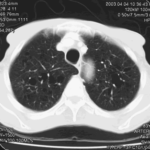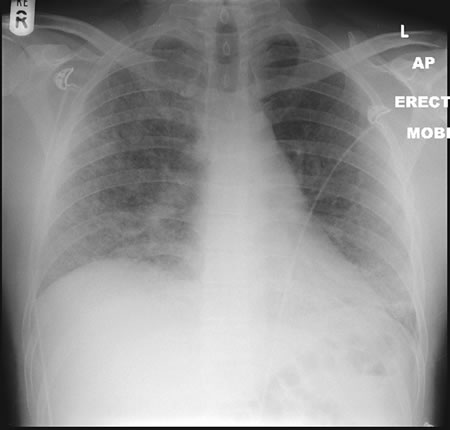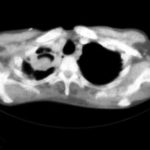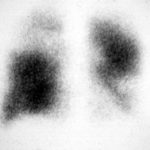Date: 26 November 2013
22/09/08 This chest radiograph shows bilateral hazy diffuse airspace disease predominating in the lower lungs with subtle nodularity in upper zones.
Copyright: n/a
Notes:
A 33 year old known Chronic Granulomatous Disorder (CGD) male presented to A&E in respiratory distress and admitted with severe bibasal pneumonia. He had been laying mulch in his garden. He had not been taking any prophylactic antifungal agents. Oxygen therapy was commenced in conjunction with IV bacterial and fungal treatment with Amphotericin B (Fungizone ®). Further consultation and an adverse reaction to the administration of Fungizone ® led to a switch to IV Voriconazole 300mg BD. The patient tested positive for aspergillus antibodies in serum. The patient declined a bronchoscopy, responded well to IV voriconazole and was discharged home 2 weeks post admission on maintenance voriconazole.
Images library
-
Title
Legend
-
Nodules and areas of atelectasis are seen at both bases. He later died.

-
Further details
It is clearly a relatively small cavitary lesion, and the patient was almost asymptomatic. This response was a ‘stable’ response. The patient was included in the report Denning DW, Lee JY, Hostetler JS, Pappas P, Kauffman CA, Dewsnup DH, Galgiani JN, Graybill JR, Sugar AM, Catanzaro A, Gallis H, Perfect JR, Dockery B, Dismukes WE, Stevens DA, NIAID Mycoses Study Group multicenter trial of oral itraconazole therapy of invasive aspergillosis. Am J Med 1994; 97: 135-144.
 ,
, 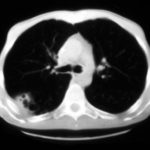
-
Well demarcated pulmonary infarction is well seen in this close-up of the lung at autopsy in a patient with histologically confirmed invasive aspergillosis. Angio invasion is characteristic of invasive aspergillosis, is associated with a worse prognosis, but is not always seen.

-
This 83 year old man presented with weight loss to a lung cancer clinic in mid 2003.
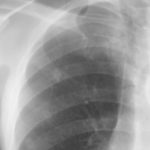 ,
, 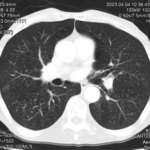 ,
, 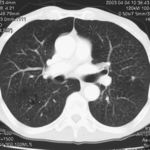 ,
, 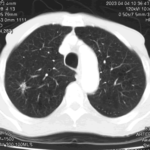 ,
, 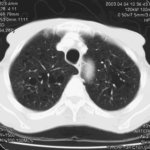 ,
, 